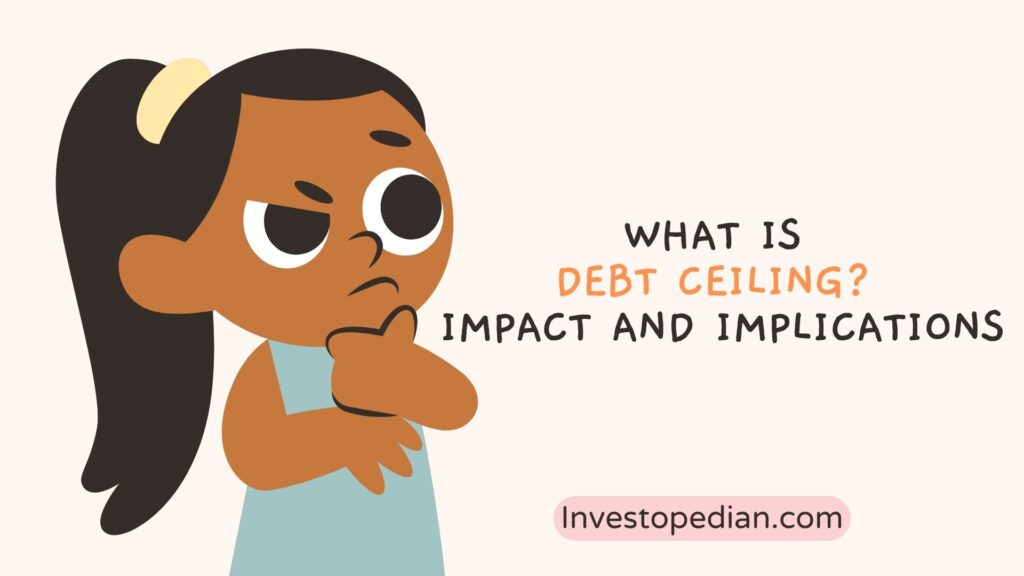Introduction to the Debt Ceiling Agreement
The debt ceiling agreement is a crucial aspect of the fiscal governance of a country, particularly in the United States. It sets a limit on the amount of debt that the government can incur to fund its operations. This article delves into the intricacies of the debt ceiling agreement, its historical background, purpose, and the economic and political implications associated with it.

Historical Background
The origins of the debt ceiling can be traced back to the early 20th century when the U.S. government sought to regulate its borrowing. Over time, the debt ceiling has evolved to become a critical component of fiscal policy.
Purpose of the Debt Ceiling Agreement
The primary purpose of the debt ceiling agreement is to ensure fiscal responsibility and control government borrowing. By imposing a limit on the amount of debt, it forces policymakers to consider the long-term implications of their spending decisions.
How the Debt Ceiling Works?
The debt ceiling is set by Congress, and the Treasury Department is responsible for managing the nation’s debt to stay within the established limit. When the government nears the debt limit, the Treasury employs measures such as suspending certain investments or redeeming existing debt to create additional borrowing capacity. However, if the debt ceiling is breached and no action is taken, it can lead to dire consequences.
Role of Congress in the Debt Ceiling Agreement
The debt ceiling agreement requires legislation to raise or suspend the limit. The process involves debates and negotiations within Congress, where lawmakers deliberate on the potential economic impacts and political implications of adjusting the debt ceiling.
Economic Implications of the Debt Ceiling Agreement
The debt ceiling has significant economic implications, particularly on financial markets. Uncertainty surrounding the debt ceiling debates can lead to increased market volatility and affect investor sentiment. In some cases, a failure to raise the debt ceiling can result in a credit rating downgrade, potentially increasing borrowing costs for the government.
Political Dynamics Surrounding the Debt Ceiling Agreement
The debt ceiling has become a political battleground, often marked by partisan disagreements. The decisions surrounding the debt ceiling can have profound political consequences, shaping public perception and influencing electoral outcomes. Different presidential administrations have approached the debt ceiling negotiations in various ways, adding to the complexity of the issue.
Historical Instances of Debt Ceiling Crises
Throughout history, there have been several instances of debt ceiling crises, with key moments of political tension. These standoffs have showcased the challenges and complexities associated with reaching a resolution and avoiding potential economic turmoil.
Alternatives to the Debt Ceiling Agreement
In response to the recurring debt ceiling debates, various alternatives and proposals for reform have been put forward. Some argue for eliminating the debt ceiling altogether, while others suggest alternative mechanisms to ensure fiscal responsibility without the need for periodic negotiations.
International Perspectives on the Debt Ceiling Agreement
The debt ceiling debates in the United States have implications beyond its borders. Comparisons with other countries’ debt management systems provide valuable insights into the global context. International stakeholders closely monitor U.S. debt ceiling discussions due to the potential impact on global financial stability.
Effects on Government Programs and Services
Failure to raise the debt ceiling and a potential default can have severe consequences for government programs and services. It can disrupt funding for essential services, leading to uncertainty and potentially triggering government shutdowns.
Debt Ceiling Agreement and Financial Markets
The debt ceiling agreement significantly affects financial markets. Investors closely watch the developments surrounding the debt ceiling debates as they can influence market sentiment and create volatility. Bond market reactions are particularly noteworthy, as they reflect investors’ perception of the government’s creditworthiness.
Public Opinion and Awareness
Public understanding of the debt ceiling is crucial in shaping political decisions. Public sentiment can influence lawmakers’ positions and their approach to debt ceiling negotiations. Increasing awareness and educating the public about the complexities of the debt ceiling can foster a more informed and constructive discourse.
Debates on the Debt Ceiling Agreement
Debates surrounding the debt ceiling involve various arguments for and against raising the limit. Proponents argue that raising the debt ceiling is necessary to ensure the government’s ability to meet its financial obligations and avoid economic instability. Opponents express concerns about the long-term consequences of excessive borrowing and emphasize the need for fiscal restraint.
Historical Resolutions of Debt Ceiling Standoffs
Past debt ceiling standoffs have ultimately been resolved through compromises and bipartisan agreements. Temporary measures and short-term solutions have been employed to prevent default and provide breathing room for further negotiations.
Recent Developments and Current Status
Understanding the current debt ceiling situation is crucial in assessing the ongoing debates and potential outcomes. Recent developments and negotiations shape the landscape of the debt ceiling agreement, highlighting the importance of monitoring the situation.
Implications for the U.S. Economy
The debt ceiling has far-reaching implications for the U.S. economy. A failure to raise the debt ceiling and a potential default can have severe consequences, including disruptions in financial markets, increased borrowing costs, and damage to the country’s creditworthiness. Addressing long-term fiscal challenges is vital to ensure economic stability.
Role of Financial Institutions and Economists
Financial institutions and economists play a crucial role in analyzing and providing insights on the debt ceiling. Their expertise helps inform policymakers, investors, and the public about the potential economic ramifications and the necessity of addressing the debt ceiling in a responsible manner.
Conclusion
The debt ceiling agreement is a critical aspect of fiscal governance, shaping economic stability and political dynamics. Understanding the intricacies of the debt ceiling, its historical background, economic implications, and political debates is essential for stakeholders and the general public alike. Addressing the debt ceiling responsibly is paramount to ensure the long-term financial health and stability of the country.